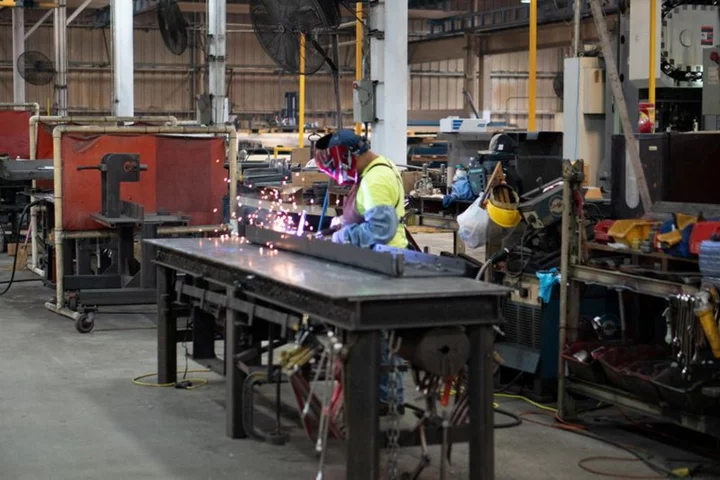WASHINGTON U.S. manufacturing slumped further in June, reaching levels last seen when the economy was reeling from the initial wave of the COVID-19 pandemic, according to a survey on Monday that also showed price pressures at the factory gate deflating.
The Institute for Supply Management (ISM) said that its manufacturing PMI dropped to 46.0 last month, the lowest reading since May 2020, from 46.9 in May. That marked the eighth straight month that the PMI stayed below the 50 threshold, which indicates contraction in manufacturing, the longest such stretch since the Great Recession.
Economists polled by Reuters had forecast the index edging up to 47. Manufacturing, which accounts for 11.1% of the economy, contracted at a 5.3% annualized rate in the first quarter, government data showed last week.
Some pockets of strength remain, however, amid solid demand for goods like transportation equipment, machinery as well as electrical equipment, appliances and components.
Manufacturing is struggling under the weight of 500 basis points worth of interest rate increases from the Federal Reserve since March 2022, when the U.S. central bank embarked on its fastest monetary policy tightening campaign in more than 40 years. Spending is shifting to services and away from goods, which are typically bought on credit. Businesses are also carefully managing inventories in anticipation of weak demand.
Business inventories increased at their slowest pace in 1-1/2 years in the first quarter. Economists say the sector has yet to feel the pain from a tightening in credit following financial market turmoil earlier this year.
The ISM survey's forward-looking new orders sub-index increased to a still-subdued 45.6 from 42.6 in May. Weak demand is depressing prices for inputs. The survey's measure of prices paid by manufacturers fell to 41.8 from 44.2 in the prior month as bottlenecks in the supply chain have eased considerably and higher borrowing costs dampen demand.
According to the ISM, the delivery performance of suppliers to manufacturing organizations has been faster for nine straight months. The economy has seen considerable goods disinflation. But services inflation, which is now the main focus, has remained sticky largely because of stronger wage growth from a tight labor market, as well as higher rents for housing.
The survey's gauge of factory employment dropped to 48.1 from 51.4 in May. It has not been a reliable predictor of manufacturing employment in the government's nonfarm payrolls count. Factory employment has largely increased this year.
(Reporting by Lucia Mutikani; Editing by Chizu Nomiyama)









